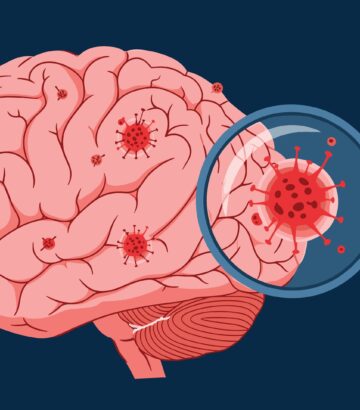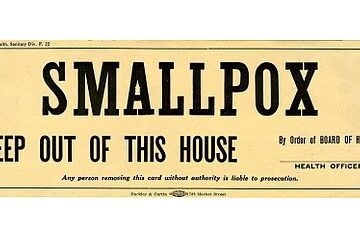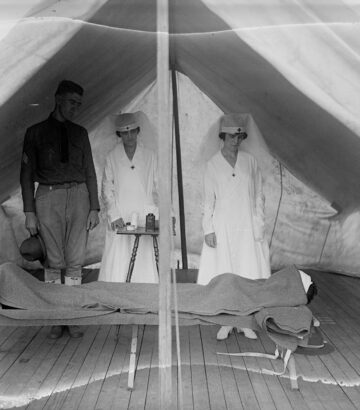Long COVID Fatigue: Beyond “Just Tired”
This post is part of a new blog series focusing on long COVID. See parts 1, 2, 4, 5, and 6.
Long COVID is often associated with chronic fatigue, a persistent sense of exhaustion or lack of energy that can significantly impact normal functioning and quality of life. For this post, we will be discussing severe chronic fatigue as it relates to long COVID, and how you can best support fatigued long-haulers.
There are over 200 symptoms of long COVID,1 and while fatigue is just one of them, it is often one of the more serious symptoms impacting long-haulers. In fact, about half of all long COVID cases meet diagnostic criteria for a condition called myalgic encephalomyelitis/chronic fatigue syndrome (ME/CFS).2 This condition, as its name suggests, is defined by severe chronic fatigue. We do not fully understand ME/CFS, but it is usually caused by viral infections (e.g., COVID-19) that trigger immune, metabolic, and vascular abnormalities.2,3 (The underlying mechanisms of ME/CFS are beyond the scope of this post, but you can learn more by checking out references 2 and 3.)
Now, what do I mean by severe chronic fatigue?
The type of fatigue experienced by long-haulers, particularly those whose symptoms resemble ME/CFS, is debilitating.2,3 This fatigue significantly limits normal human functioning, with many individuals unable to work or properly care for themselves. This fatigue is also unrelenting; it does not substantially improve with sleep or rest. In some cases, individuals with severe chronic fatigue may even be housebound or bedridden. An estimated 25% of ME/CFS patients – one in four – will at some point experience bedriddenness,4 making the illness a substantial disability that greatly impacts quality of life.
Additionally, long COVID and ME/CFS fatigue is not something that can be pushed through – not without negative consequences. Another defining feature of ME/CFS is post-exertional malaise (PEM), a significant and prolonged worsening of fatigue and other disease symptoms following overexertion.2-5 This includes both physical and mental overexertion, as the brain uses a lot of energy. Episodes of PEM – also called “crashes” or “flares,” referring to crashing energy levels and flaring symptoms – can occur after virtually any activity, even those normally considered mild (washing the dishes, reading a book, talking on the phone, etc.). Patients do not always recover back to baseline after experiencing PEM, making this a serious issue.
I have been living with long COVID and related ME/CFS for several years now. I can attest to the absolutely crushing level of exhaustion associated with these conditions, which does not resolve no matter how much sleep you get. You cannot push through the fatigue, and if you try, you will pay for it later. I have struggled with PEM after overexerting myself on a variety of occasions – after studying for exams, traveling for medical appointments, going out dancing, experiencing the death of a loved one, and more. Some of these PEM episodes have left me bedridden for several days or housebound for weeks at a time, completely unable to function normally. It is absolutely miserable, and there is nothing you can do about it, except rest and hope it passes as quickly as possible.
And yet, long-haulers too often hear statements along the lines of “you just have to try harder.” Severe chronic fatigue due to long COVID and ME/CFS is not like normal tiredness, but healthy individuals often assume that we’re “just tired” and need some encouragement to push through our symptoms. Generally, I think this behavior is well-intentioned, as people earnestly want to help others address their struggles. However, there are right ways and wrong ways to address severe chronic fatigue. It is not helpful – and can even be harmful – to tell long-haulers to “just try harder” when doing so may result in even greater suffering, including potentially permanent health decline.
Instead, I have some alternative recommendations on how to support long-haulers with severe chronic fatigue. The first is to just listen. When we confide in you about our struggles, we often just need to vent and want compassion – not advice on how we need to try harder. Also, please do not mistake a rare good day or week with overall condition improvement and the ability to do more. The fatigue experienced by long-haulers can be inconsistent and temporarily appear better, but as soon as overexertion occurs, we crash again.2,3 Additionally, unsolicited medical advice is not helpful. There are no FDA-approved treatments for long COVID or ME/CFS, and there is no alternative practice that will cure PEM.4,5 Activity pacing is the only proven strategy for managing severe chronic fatigue associated with these conditions.5
This leads me to my next recommendation: try to support long-haulers with activity pacing. This strategy involves carefully pacing out one’s daily activities, which helps conserve limited energy.5 For long-haulers with severe chronic fatigue, pacing is critical for avoiding overexertion and PEM episodes, and therefore improving quality of life. Rather than advising long-haulers to push through their fatigue and leaving them alone to manage their daily activities, try assisting them with certain tasks. Simple acts, such as helping with chores or running errands, can often make a world of difference in improving the lives of your loved ones struggling with long COVID and severe chronic fatigue. Remember, we are not “just tired.”
References
1. National Academies of Sciences, Engineering, and Medicine. A long COVID definition: a chronic, systemic disease state with profound consequences. Published 2024. Accessed September 22, 2025. https://nap.nationalacademies.org/read/27768/chapter/2#2
2. Annesley SJ, Missailidis D, Heng B, Josev EK, Armstrong CW. Unraveling shared mechanisms: insights from recent ME/CFS research to illuminate long COVID pathologies. Trends Mol Med. 2024;30(5):443-458. doi:10.1016/j.molmed.2024.02.003
3. Komaroff AL, Lipkin IW. ME/CFS and long COVID share similar symptoms and biological abnormalities: road map to the literature. Front Med. 2023;10:1-24. doi:10.3389/fmed.2023.1187163
4. Centers for Disease Control and Prevention. ME/CFS basics. cdc.gov. Published May 10, 2024. Accessed September 15, 2025. https://www.cdc.gov/me-cfs/about/index.html
5. Ghali A, Lacombe V, Ravaiau C, et al. The relevance of pacing strategies in managing symptoms of post‑COVID‑19 syndrome. J Transl Med. 2023;21(1):1-12. doi:10.1186/s12967-023-04229-w












